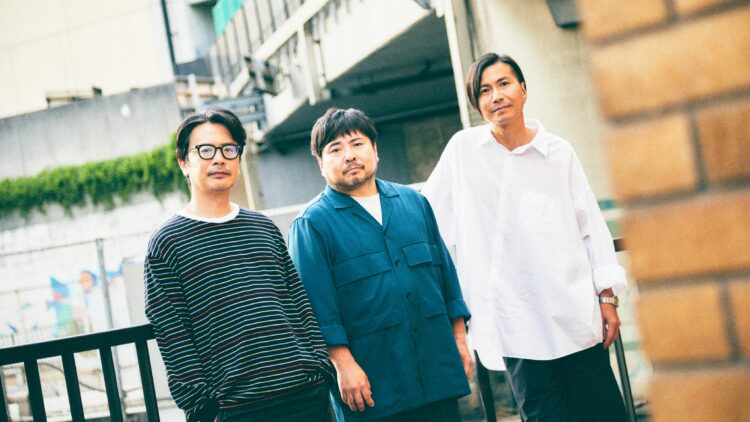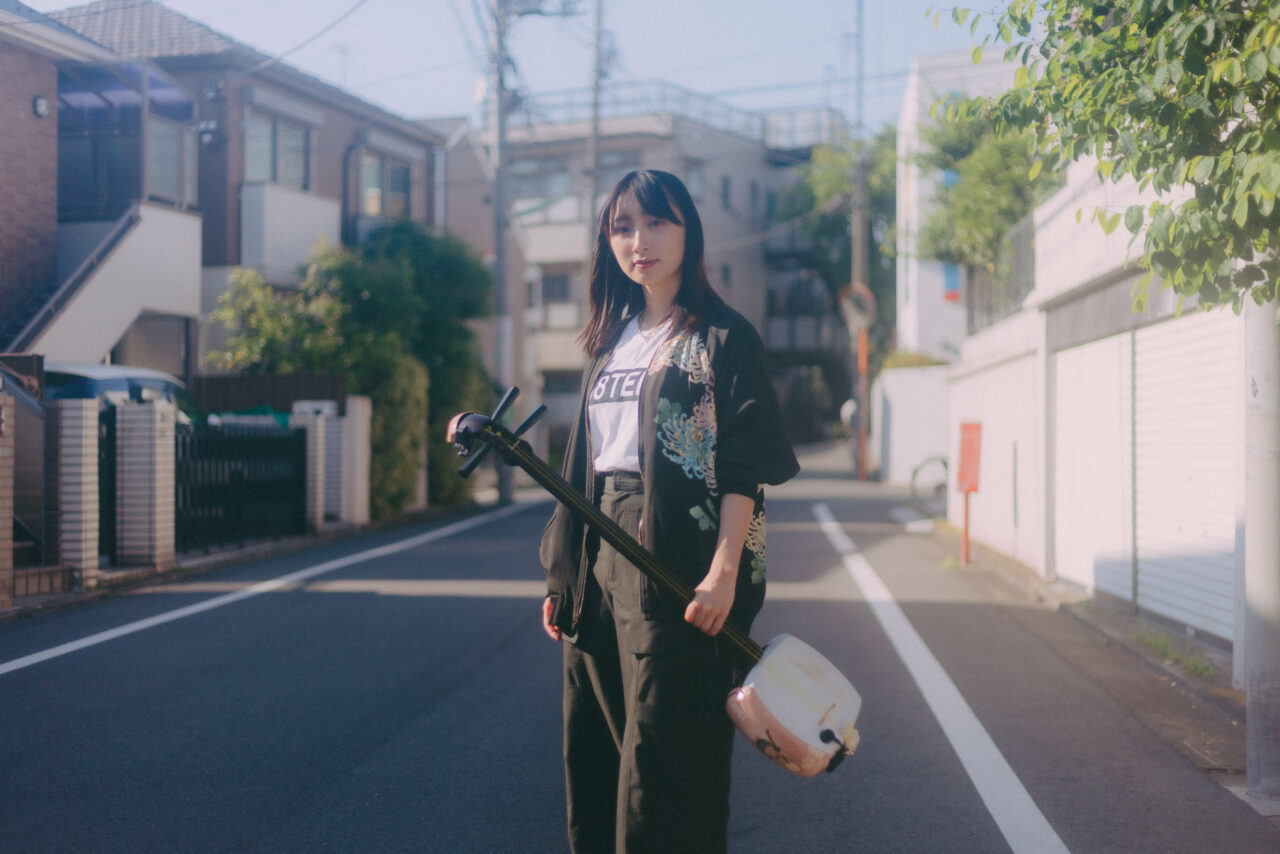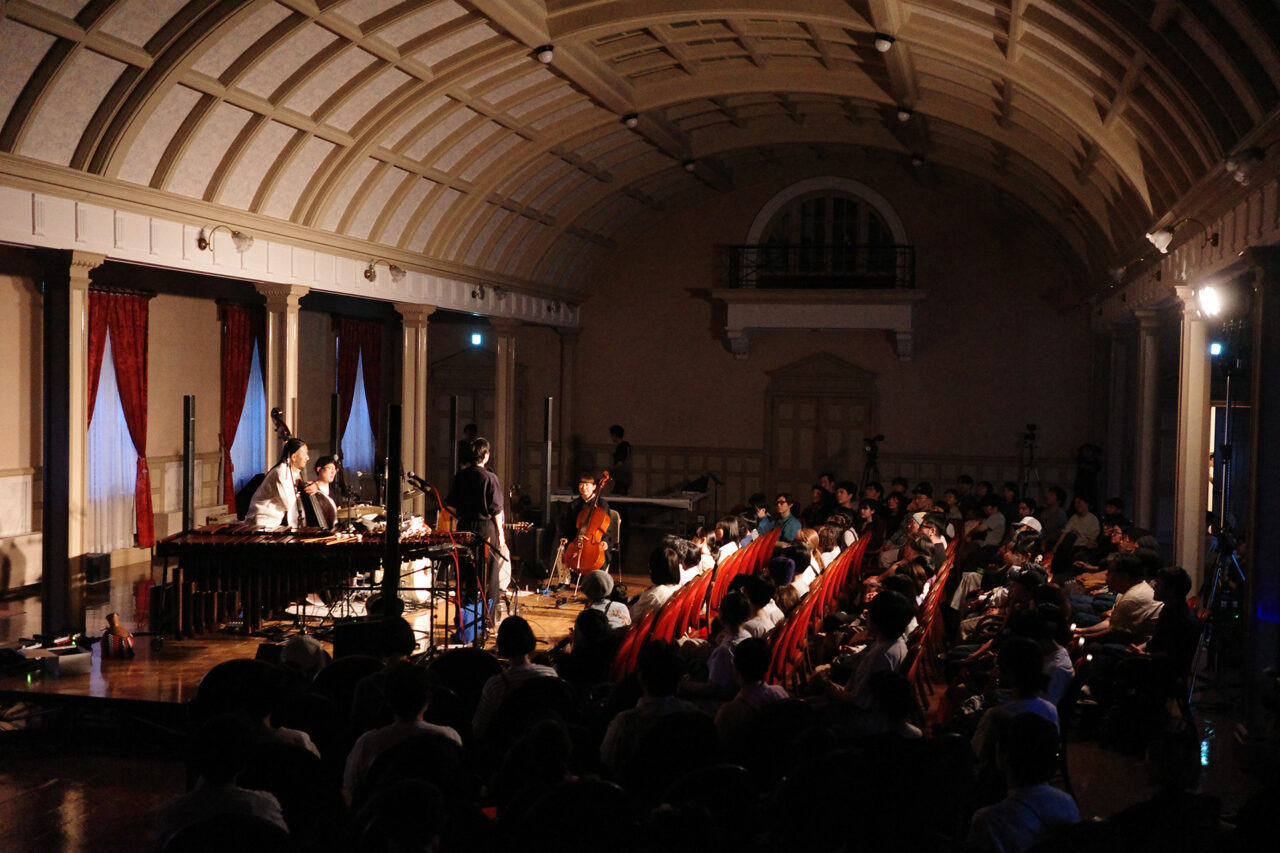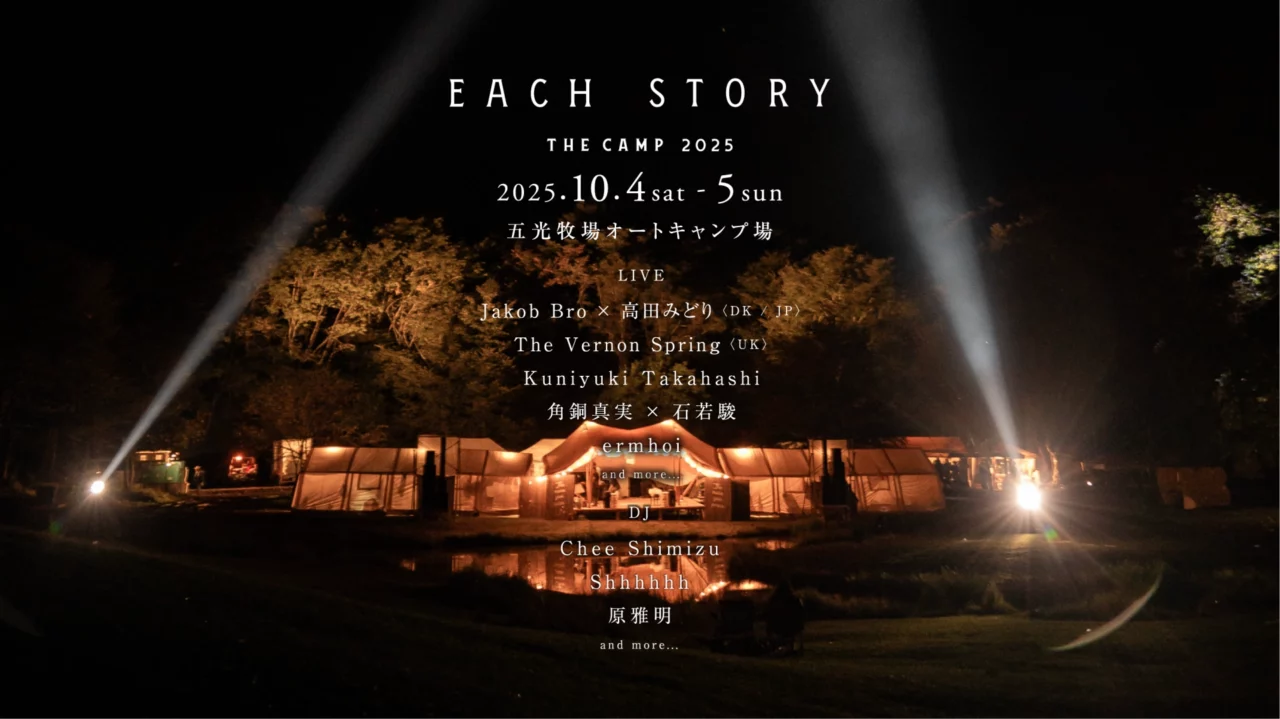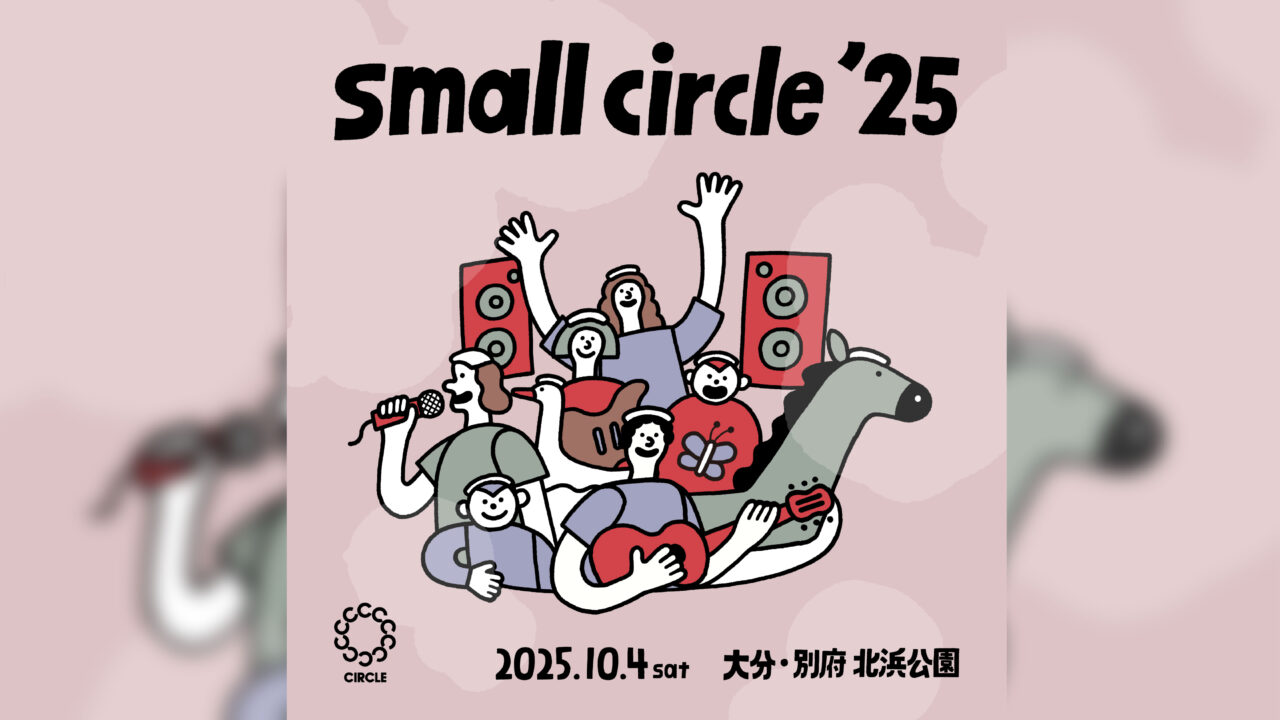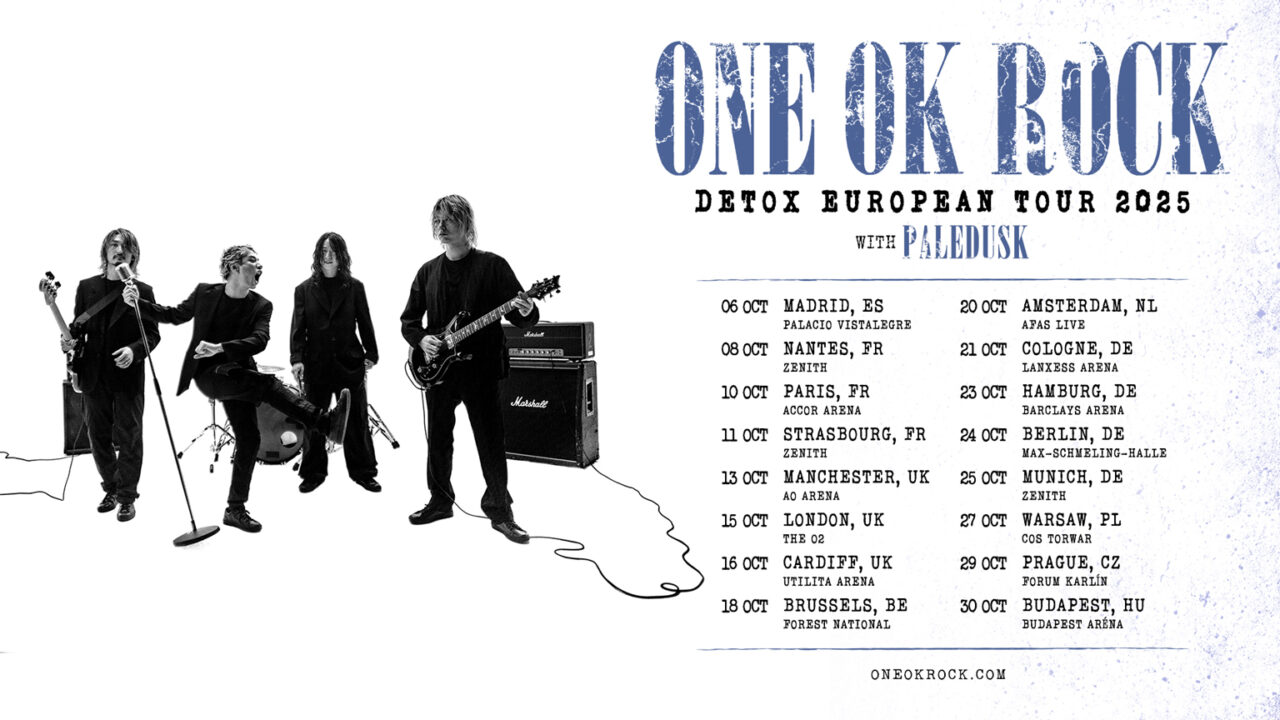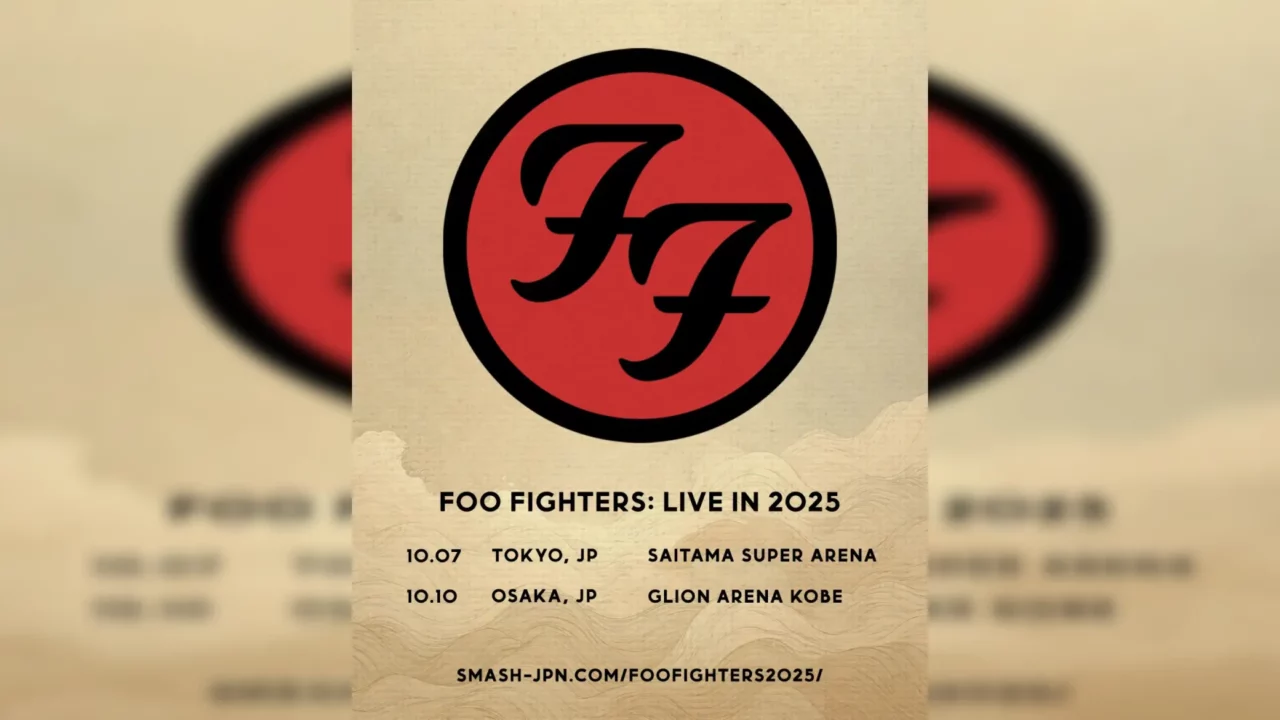After two decades, Quruli has crafted a brand-new album titled “Kankaku wa Michishirube” alongside the return of their original drummer, Nobuyuki Mori. This remarkable journey of album production, captured in the documentary “Quruli no Eiga,” primarily set during an intensive training camp at Izu Studio, is set to hit screens on October 13. The album’s 13 songs, meticulously crafted through raw studio sessions with the core trio, are a testament to the band’s origins as a guitar, bass, and drums-powered trio, harking back to their very roots.
Despite two decades since the last album by the trio, their shared stage experiences at “Kyoto Music Expo” and on various tours since 2002, when Mori initially departed from the band, make this collaboration a different kind of “reunion.” The documentary doesn’t dwell on the past or overemphasize the dramatic elements of their “reunion.” Instead, it offers a refreshing and lighthearted take on the production process, aligning with the spirit of their work the aforementioned album, emphasizing the importance of “living in the present.” In an exclusive interview, Shigeru Kishida, Masashi Sato, and Nobuyuki Mori provide insights into the album’s creation process.
INDEX
The First Album by the Original Members in 20 years: “It Felt Right Timing to Work on It in an Old School Way”

– How did you come to make a new album with the original members for the first time in a long time?
Kishida: Recently, I have been making music on my own and then performing it with a band, so I thought it would be a good time to start making music from scratch with a band. I have been doing that occasionally recently, but I thought it would be interesting to try it with the original members.
Sato: This time, we were already talking about a movie, so we said, “Well, why don’t you have them film it?
Kishida: So it just happened by chance.
But the reason I just mentioned explains well is the easiest to understand. I’ve been doing a lot of productive songwriting and recording recently, so I thought I’d loosen up a bit and try it again the way I’ve always done it, with a band and a session.

– The way of making music has shifted to mainly DTM, and I got the impression that this shift was further accelerated after the Corona Disaster.
Kishida: Not all of it, but not none of it. But I didn’t think separately about “what is a band”.
– I think you said in the film that you had a lot of thoughts about it at first, but how did you really feel about it?
Mori: I had no idea how the recording would turn out until I opened the lid, so I was very excited, but I was nervous until we actually did it. But I was very excited about it until we actually did it, and when we did it, it turned out to be a way of making music that I myself had forgotten about.

Mori: After I left Quruli, I worked with a lot of different people, but most of the time I had a song and lyrics, and then I had to figure out how to arrange them. It was interesting for the three of us to build it from scratch, and I was happy that it ended up as an album.
Sato: The current live performance format is becoming more and more band-like, so I think I had a desire for something like “the fun of a band. The things that I used to take for granted with Mocchi, such as making an album, going on tour, and then going back into the studio, are no longer possible in the current form.

Sato: There are a lot of conditions that come into play, such as coordinating the schedules of various people and saying, “It’s going to cost this much to do this, so we have to set this much as our goal. But this time, because we had the film, we were able to sit down and do the obvious things, and I think that was the best part.
Kishida: The band at the current concert is a different band, or rather, we have been working together for a long time and have developed a strong relationship of trust in our performances. However, the core of the band is still me and Sato, and the three of us in the original band are at the root of what Sato and I are doing now.
If the three of us had not been able to accomplish something together, we might not have been able to do what we did this time. But the three of us have a track record of making songs like “Tokyo” and “Roses”, and those songs are still popular among our fans, so I think they are special in some way. I think they are still popular among our fans and have some kind of special meaning. I think there is something that only the three of us can create, and that is what we wanted to create.
INDEX
The significance of Izu Studio as a location engraved in “Quruli’s Film”
– Other than “going into the studio and creating from scratch in a session,” was there anything else you decided on in advance for this production?
Kishida: Basically, we decided to do it with just the three of us, without including any sounds from players other than the three of us. We also had a LINE group of the three of us where we would say, “Let’s do it like this,” or when the three of us met, we would talk about how we wanted the music to be like this. When the three of us were working together originally, we had a lot of freedom in terms of ideas and attitude. When the three of us were working together, we were free to do whatever we wanted, for better or for worse.
We did a lot of things that deviated from the “this is what a band is supposed to do” or “this is what a guitarist is supposed to do,” so I thought it would be better not to make too many rules at the beginning.
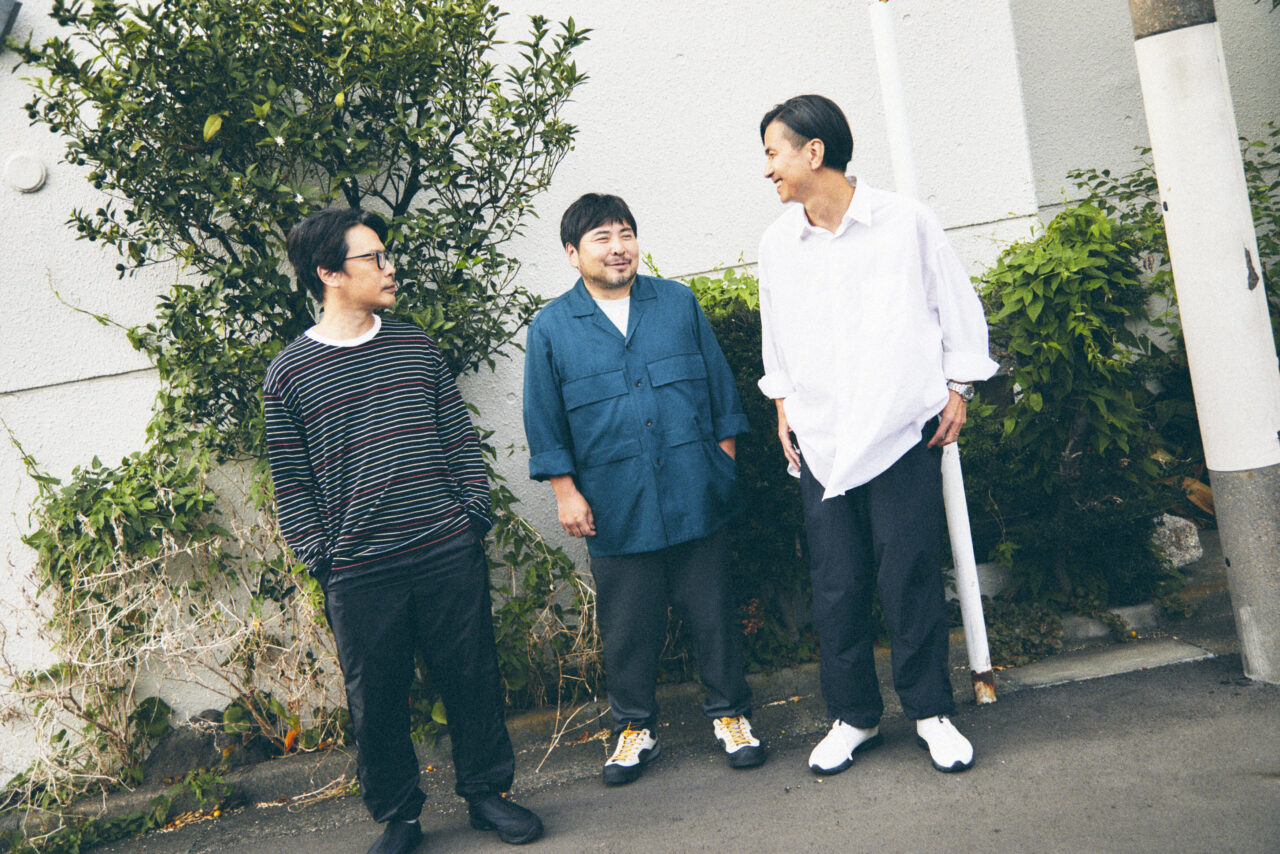
– In terms of music, are there some keywords like “1990s alternative” or “1960s British rock”?
Kishida: We talked about those things a little bit, but it was quicker to get the sound out than to dwell on it, so we just made a good setup and recorded the song in a good sounding condition, and then we just made the most of the sound of the studio itself and the engineer’s work. There are some songs that we discussed “how this song should sound like,” but there are also songs that we just created without discussing anything like that.
– Was there a reason why you chose Izu Studio?
Sato: We preferred a training camp to an environment where we had to commute from our respective homes or hotels every day. Of course, there was the fact that we would be filming, but I thought it would be better to be in an environment where we could eat the same food, drink the same alcohol, and have serious conversations that end up getting everyone drunk.
– You had a vintage table and equipment, a nice room sound, and the environment was a good fit for the music we were trying to do this time.
Kishida: As a result, it turned out to be a good fit. At first, we were thinking of renting a place like an inn in the countryside and bringing our equipment there, but considering the time and effort required for transportation and engineers, we are glad we decided to go to Izu. It’s a rather classic studio, including the tables, which is something you don’t find in Japan these days, and I think it suits the music we’re trying to make and what we’re trying to do.

Mori: I have also used Izu studio several times, and the environment is very nice, with good food and the ocean nearby. Some studios in town are closed off, but Izu-Studio has large windows and a relaxing environment.
There are many things we know about each other and things we don’t know about each other when we have been apart for a long time, so it was important for us to close the gap a little, and to have a drink after the studio.
INDEX
Sato: There’s a Different Level of Soul We Put into the Songs We Create as Trio”
– Mori said he was reminded the past when you guys actually started playing together. How about you, Sato?
Sato: Going into the studio to write songs was totally normal, but working with Mokkun, at first, I felt like I was trying to “get along” with him. When we used to work together, I knew only a few other drummers, but after having played with many drummers since then, I was playing while remembering Mokkun’s greatness and what I liked most about him.

Sato: Also, when I play with Mokkun, I have to be strong in playing my instrument or it doesn’t make much sense. Maybe it’s the songs that the three of us make together that makes it so, but I was thinking that I don’t play my instrument so strongly these days in live performances or recordings.
– That’s not simply because you play so loudly?
Sato: It’s not like that either. The three of us put our hearts and souls into the songs we make together. I guess that’s what I was thinking.
Mori: My sense is that this time, rather than “Sayonara Stranger” or “Zukan”, I had the feeling of the “TEAM ROCK” days or even earlier. I don’t know how to explain it.
– How do you feel about it?
Kishida: There are some references to what we did before, or “this person did this, so let’s do this” in some places, but it’s nothing more than “Oh, by the way, this person likes Curry”.
What we’re creating is new music, so there are fewer elements of self-cosplay, and as for pinpointing any specific work… Well, I don’t think about it that much from the piece’s perspective. However, I recall the times it went well, and I think, “Let’s make it work as smoothly as it did back then.”

Sato: At the time of “TEAM ROCK,” there were an awful lot of rejected songs, and since CD singles were at their peak, we released an awful lot of songs for couplings and so on, and some of them were just plain silly.
But after we made our major label debut, it was hard to make songs like that, and we didn’t have the sense that the songs we would play at live shows as a small soundtrack would become songs, so I don’t think we played those rootsy songs as an army. I think we were able to create a song that is a little bit different from the antics of the old couplings, that is more like our original selves, and yet is still a song in its own right.



